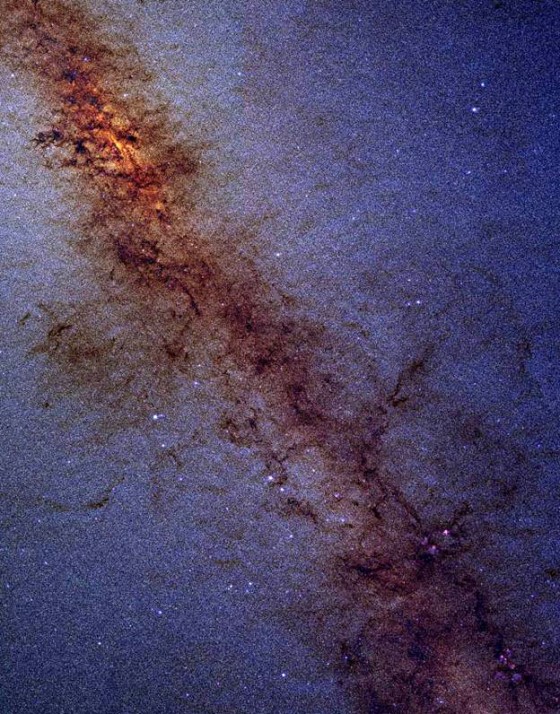On a clear dark night away from city lights, the star-spangled heavens can create an overwhelming sense of infinity. Seemingly countless points of light, so far away, urge one to contemplate the insignificance of a lone planet amid the incomprehensible breadth of the universe.
But what's really up there? And how far can we see with the naked eye?
Such cosmic ponderings can start arguments.
Joseph Umhauer of East Amherst, N.Y., wrote recently to ask if I could settle one. Umhauer and some friends were discussing our story about , and they began to debate what in space is visible from Earth.
Specifically, they wondered whether all that we see is within our own galaxy, or whether a stargazer can glimpse a greater beyond.
Our back yard
Alas, we see very little outside our own back yard, a tiny neighborhood of our galaxy where the sun is common, just another three-bed, two-bath star in the suburbs of the Milky Way.
Almost all of the sky objects visible to the naked eye are stars that reside in our galaxy. In fact, the bulk of those you can see are relatively nearby, within a few thousand light-years. Most are actually within a few hundred light-years, with the exception of a few intrinsically brilliant stars that are many thousands of times more luminous than the sun.
For comparison, the sun is about 26,000 light-years from the galactic center, orbiting on an outer spiral arm. The galaxy itself is about 100,000 light-years wide. We see most of its contents only with powerful telescopes working at various wavelengths of light not visible to humans.
A light-year is the distance light travels in one year, racing at a speed of 186,000 miles per second. It's equal to about 5.88 trillion miles, or 9.46 trillion kilometers.
On a clear, dark night in the countryside at the right time of year, you can actually see the milky swath that gives our galaxy its name. It is a fuzzy region of the sky that represents the millions upon millions of stars toward the central disk of the galaxy, where the bulk of the Milky Way's stars are huddled in a bulge around a .
Seeing the Milky Way's main disk from our perspective is akin to standing near the edge of a cornfield, poking your head up, and trying to see the middle of the field during a thick ground fog.
Counting downThere are roughly 300 billion stars in the Milky Way.
At most, 8,479 of them are visible from Earth to someone with perfect vision under ideal conditions. Not all these stars can be seen from any one location, of course. You miss about half of them by not traveling to the Southern Hemisphere, for example. The horizon and the seasons place further limits. Roughly 2,500 stars are available to the unaided eye in ideal conditions from a single spot at a given time.
Light pollution in cities and suburbs throttles the number down dramatically. In New York, for example, as few as two dozen stars dot the dome of night.
Clear and dark skies reveal a handful of nearby galaxies, but each is on the fringe of naked-eye visibility. The most obvious and celebrated is the Andromeda Galaxy, which is the closest large galaxy to the Milky Way.
At 2.5 million light-years away, Andromeda is markedly more distant than all visible stars.
"The light you are now seeing is around 25,000 centuries old and began its journey around the time of the dawn of human consciousness," says Joe Rao, Space.com's columnist. "When it began its nearly 15-quintillion-mile journey earthward, mastodons and saber-toothed tigers roamed over much of pre-ice-age North America and prehistoric man struggled for existence in what is now the Olduvai Gorge of East Africa."
No one can see the individual stars of another galaxy without a big telescope.
As light pollution renders the sky less interesting, some objects become all the more prominent. Some of the brightest "stars" in the sky are planets. Venus, Mars, Jupiter and Saturn routinely rival or outshine the brightest stars, depending on where they are on their orbits around the sun in relation to the position of Earth.
Venus can be that concerned citizens call their local law enforcement offices to ask what's up.
And of course when it is up. Several are also visible at night, including the international space station.
And finally, since we're counting, there's one more celestial object to mention, one that is visible in broad daylight. It is the brightest star in the sky. Our sun, of course.
